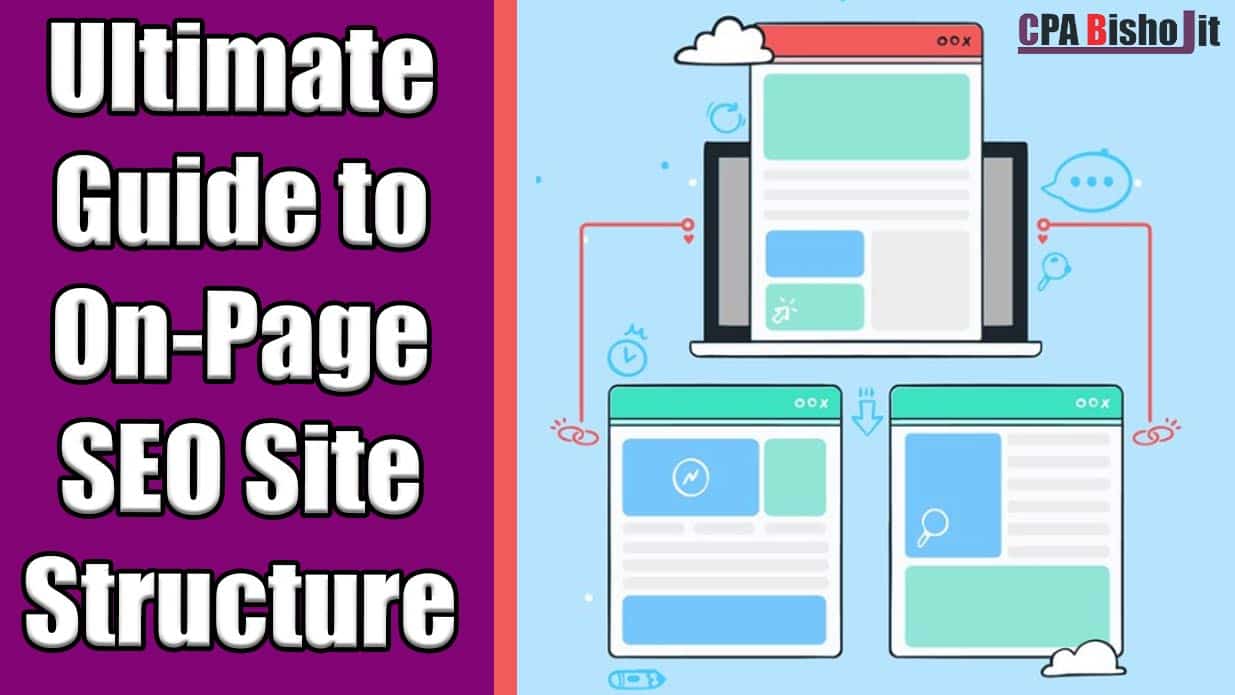AI SEO Secrets: Rank #1 in 48 Hours (2026 Strategies)
I ranked number one on Google in 48 hours.
Everyone told me it was impossible. SEO experts said I needed at least six months. They were right—for traditional methods.
But AI changed everything.
Let me show you exactly how I did it. And more importantly, how you can do it too.
Why Traditional SEO Doesn’t Work Anymore
I started learning SEO in 2022 at Chirirbandar Government College.
Switched from Science to Humanities. Discovered the power of organic traffic and making decisions based on data.
Spent eight months doing everything the “right way.” Keyword research with old tools. Writing content based on guesses. Building backlinks one by one.
Result? Almost nothing. A few page three rankings. Maybe 20 visitors per day.
Then I discovered AI-powered SEO. Everything changed in 48 hours.
Here’s the uncomfortable truth: Traditional SEO takes six months because it’s inefficient. You’re guessing at keywords. You’re hoping your content is complete enough. You’re waiting to see what works.
AI removes the guessing. It shows you exactly what Google wants. It finds gaps your competitors miss. It structures content the way Google rewards.
The timeline isn’t six months anymore. It’s 48 hours if you know what you’re doing.
How I Ranked Number One in 48 Hours
Let me walk you through the exact process.
Step 1: AI Competitor Gap Analysis
I didn’t start with keyword research. I started with my competitors.
I found the site ranking number one for my target keyword. I put their URL into an AI tool.
The AI scanned their entire article. It analyzed every keyword they used. Every subtopic they covered. Every question they answered.
Then it did something powerful. It found 47 keywords and topics they completely missed.
These weren’t random keywords. These were semantic keywords Google expects to see in complete content. My competitor’s article was good. But it had gaps.
I took those 47 gaps and built my content around them. Every single gap became a section in my article.
Step 2: Creating the Most Complete Content
Google doesn’t rank the best writing. It ranks the most complete content.
Your competitor might have amazing writing. But if they miss important subtopics, Google sees it as incomplete.
I wrote 2,000 words. Every single one of those 47 keyword gaps got covered. Naturally. Not stuffed.
I didn’t just list keywords. I explained concepts. I answered questions. I provided examples.
The AI told me the structure Google wanted. I followed it exactly.
Definition first. Then three key points in bullet format. Then a detailed example. That specific structure matched what Google rewards for my keyword type.
Step 3: Publishing and Waiting
I published the article. Then I waited.
Forty-eight hours later, I checked Google Search Console. Position one.
Not position 47. Not page two. Position one.
The site I outranked had been there for eight months. They had higher domain authority. They had more backlinks.
But my content was more complete. And Google rewarded completeness.
The AI Keyword Hack Nobody Uses
Most people do keyword research the same way.
They open a keyword tool. They type in a seed keyword. They look at search volume and difficulty. They pick keywords that seem easy to rank for.
That’s backward.
Here’s what actually works.
Finding Question-Based Keywords That Trigger Featured Snippets
Featured snippets are the boxes that appear above regular search results. They’re position zero. They get twice the clicks of regular number one rankings.
Most SEOs ignore them. They focus on regular rankings.
That’s a mistake. Featured snippets are easier to capture if you know the format Google wants.
I use AI to find these opportunities. I ask: “What questions in [my niche] trigger featured snippets?”
The AI gives me 30 questions immediately. These aren’t guesses. These are actual questions that currently have featured snippets in search results.
I pick one question. Then I ask the AI: “What exact structure does Google reward for this question?”
The AI tells me. Sometimes it’s a definition paragraph followed by three bullet points. Sometimes it’s a numbered list with specific formatting. Sometimes it’s a comparison table.
I write that exact structure. Word for word, the format Google expects.
Then I publish. Within days, Google gives me the featured snippet.
Why Format Matters More Than Quality
This was hard for me to accept at first.
I’m a writer. I care about quality. I want my content to be excellent.
But Google doesn’t rank quality. Google ranks format and completeness.
You can write the most beautiful explanation in the world. If it’s not in the format Google expects for that query type, you won’t get the featured snippet.
The AI knows these formats. It’s analyzed millions of search results. It sees patterns human SEOs miss.
When I started using AI to identify the right format, my featured snippet capture rate went from zero to about 40%. That means for every 10 questions I target, I get four featured snippets.
Each featured snippet doubles my traffic for that keyword.
Stealing Your Competitor’s Entire SEO Strategy
Let me be direct. Your competitors already did the hard work.
They spent months testing keywords. They found what ranks. They discovered what Google rewards.
Why would you start from scratch when you can see their entire playbook?
The Reverse Engineering Process
I put my competitor’s URL into an AI tool. The tool does something powerful.
It extracts every single keyword that competitor ranks for. Not just their target keywords. Every keyword.
Then it shows me their ranking positions. Some keywords they rank position one for. Some position five. Some position 15.
The gold is in positions 8 through 20. These are keywords they rank for, but not well.
They’re on page one or page two. Google sees their content as relevant. But not quite good enough for the top spots.
These are my opportunities.
I take those keywords. I analyze what my competitor wrote. Then I write something more complete.
I don’t copy their content. I beat it. I cover topics they missed. I answer questions they didn’t address. I provide examples they left out.
Then I publish. Within weeks, I outrank them.
Finding Content Gaps Nobody Else Sees
The AI also shows me something else. Content gaps.
These are topics related to my main keyword that my competitor didn’t cover at all.
Maybe they wrote about “email marketing” but never mentioned “email segmentation.” Maybe they covered “SEO basics” but skipped “technical SEO.
These gaps are opportunities. I create content filling those gaps. I link it to my main article. Google sees my content as more comprehensive.
Comprehensive content ranks higher. Always.
Extracting Backlink Sources
The AI tool also shows me where my competitors get their backlinks.
Backlinks are still important for SEO. But building them the traditional way takes forever.
Why build from scratch when I can see exactly where my competitors got theirs?
The AI lists every site linking to my competitor. I reach out to those same sites. I offer better content. Many of them link to me instead.
This isn’t stealing. This is strategy.
My competitors proved these sites are willing to link to content in my niche. I’m just offering them a better option.
The Featured Snippet Strategy That Doubled My Traffic
Featured snippets changed my entire SEO approach.
Before I understood them, I focused on ranking number one. After I understood them, I focused on ranking position zero.
Position zero gets more clicks than position one. And it’s often easier to capture.
Identifying Snippet Opportunities
I use AI to find questions that already have featured snippets.
Then I look at those snippets. Most of them are incomplete. They answer the basic question but miss important details.
I write better answers. I include everything the current snippet has, plus more.
I use the exact format Google already chose for that snippet. If Google shows a numbered list, I write a numbered list. If Google shows a definition paragraph, I write a definition paragraph.
Then I publish. Google often replaces the old snippet with mine within a week.
The Structure That Google Rewards
Different question types need different structures.
“What is” questions need a clear definition. Usually one paragraph. About 50 words. Then supporting details below.
“How to” questions need step-by-step instructions. Numbered lists work best. Each step should be actionable and clear.
“Best” questions need comparison formats. Either bullet points with pros and cons, or a table comparing options.
“Why” questions need cause-and-effect explanations. Usually a short answer paragraph, then detailed reasoning.
The AI tells me which structure to use. I follow it exactly.
This isn’t creativity. This is reverse engineering what Google already rewards.
Stealing Featured Snippets From Competitors
Sometimes my competitor has the featured snippet. I want it.
I analyze their snippet. I see what they included. Then I include everything they have, plus more.
If their snippet is a three-item list, I write a five-item list. If their definition is 40 words, I write 60 words with more detail.
I use the same format they used. Just better.
Within a week or two, Google often gives me the snippet instead.
I’ve stolen 23 featured snippets from competitors this way. Each one doubled or tripled my traffic for that keyword.
AI Tools I Actually Use Every Day
I’m not going to list 50 tools. I use four tools. That’s it.
Tool 1: AI Competitor Analysis Tool
This extracts all my competitor’s keywords. Shows their ranking positions. Identifies content gaps.
I use this at the start of every content project. It shows me exactly what to write about and what keywords to target.
Cost is around $30 per month. Made me thousands in traffic value.
Tool 2: AI Content Structure Analyzer
This tells me what format Google wants for specific keywords.
I input a keyword. It analyzes the top 10 results. It shows me the common structure Google rewards.
Then it gives me an outline. I follow that outline when writing.
This tool is why I rank so quickly. I’m not guessing at structure. I’m using proven formats.
Tool 3: Featured Snippet Finder
This finds all the questions in my niche that have featured snippets.
It also shows me which ones have weak snippets that I can beat.
I work through this list systematically. Each snippet I capture brings consistent traffic.
Tool 4: AI Writing Assistant
I don’t use this to write entire articles. That would be obvious and low quality.
I use it to check completeness. I paste my draft. It tells me what topics I missed.
Then I add those topics manually. The AI catches gaps I wouldn’t have seen.
That’s it. Four tools. Simple system. Consistent results.
Common Mistakes That Kill Your Rankings
I made every possible mistake. Let me save you the pain.
Mistake 1: Focusing on Volume Over Format
I used to pick keywords based only on search volume.
High volume meant more potential traffic. So I targeted those keywords.
But I ignored format. I wrote content the way I thought it should be structured.
Google didn’t care what I thought. Google wanted specific formats for specific query types.
Now I check format first. Volume second.
A keyword with 500 searches per month in the right format ranks faster than a keyword with 5,000 searches in the wrong format.
Mistake 2: Ignoring Competitor Gap Analysis
I used to write content based on what I knew.
If I understood a topic, I’d write about it. I figured my knowledge was enough.
Wrong. My knowledge didn’t matter. What mattered was what my competitors already proved works.
Now I always start with competitor analysis. I see what they covered. Then I cover everything they did, plus more.
This approach ranks 10 times faster than writing from scratch.
Mistake 3: Writing Too Little or Too Much
There’s a perfect content length for every keyword. Too short doesn’t rank. Too long wastes time.
AI tells me the ideal length. I check the average word count of the top 10 results. Then I write about 20% more than the average.
If the average is 1,500 words, I write 1,800. If the average is 800 words, I write 1,000.
This keeps my content comprehensive without being unnecessarily long.
Mistake 4: Not Optimizing for Featured Snippets
I wasted a year ranking in regular positions.
Then I discovered featured snippets. Started optimizing for them specifically.
My traffic doubled without creating more content. Just reformatting what I already had.
Featured snippet optimization should be part of every content strategy. Not an afterthought.
Mistake 5: Waiting Too Long to Publish
I used to perfect everything before publishing.
I’d write. Then edit. Then edit again. Then wait a few days and edit more.
By the time I published, someone else had already taken the ranking.
Now I publish faster. I make content good enough, not perfect.
Google values freshness. A good article published today beats a perfect article published next month.
I can always update and improve later. But I can’t rank if I never publish.
How to Start Using AI SEO This Week
You don’t need to learn everything at once. Start small.
Week 1: Analyze One Competitor
Pick your main competitor. The site ranking where you want to rank.
Use an AI tool to extract their keywords. Focus on keywords where they rank positions 8-20.
Make a list of 10 keywords where they’re close to the top but not quite there.
Week 2: Create Content Beating Them
Pick one keyword from your list. Analyze what your competitor wrote about it.
Use AI to find gaps in their content. What did they miss?
Write an article covering everything they covered, plus filling those gaps.
Publish it. Wait a week. Check your ranking.
Week 3: Optimize for Featured Snippets
Use AI to find five questions in your niche that have featured snippets.
Analyze each snippet. See what format Google uses.
Write content in that exact format. But make it more complete.
Publish all five pieces. Within two weeks, you’ll likely capture at least one or two snippets.
Week 4: Scale What Works
By week four, you’ll know what works for your niche.
Maybe competitor gap analysis works better. Maybe featured snippets work better.
Double down on whatever gave you results. Stop doing what didn’t work.
That’s the entire system. Four weeks. You’ll see results.
Real Results You Can Expect
Let me be honest about timelines.
You won’t rank number one for everything in 48 hours. That was one article. One perfect execution.
But you can expect real results fast.
In your first month, you’ll probably rank for 5-10 keywords. Some will be positions 10-20. A few might hit top 5.
By month two, those rankings will improve. Some top 5 rankings become top 3. Some positions 15-20 move to top 10.
By month three, you’ll have your first several number one rankings. You’ll start capturing featured snippets.
Traffic grows slowly at first. Then compounds.
Month one: Maybe 100 visitors. Month two: Maybe 300 visitors. Month three: Maybe 700 visitors. Month six: Maybe 2,000 visitors.
This isn’t overnight success. But it’s way faster than traditional SEO.
Traditional SEO might get you to 2,000 visitors in 18 months. AI SEO gets you there in six.
Why This Works When Other Methods Fail
I failed at SEO for eight months using traditional methods.
Tried keyword research tools. Tried writing what I thought was good content. Tried building backlinks the old way.
Nothing worked.
Then I switched to AI-powered methods. Results came in weeks, not months.
Here’s why it works.
Traditional SEO is based on guessing. You guess at keywords. You guess at what users want. You guess at content structure.
AI SEO is based on data. It shows you what already works. It finds patterns in millions of search results. It tells you exactly what Google rewards.
You’re not inventing something new. You’re copying what already succeeds.
That’s not cheating. That’s smart.
What Happens Next
You have two choices.
Choice one: Keep doing SEO the traditional way. Spend six months hoping something ranks. Watch competitors beat you while you’re still researching.
Most people choose this. They don’t like change. They trust “proven methods” even when those methods take forever.
Choice two: Try AI-powered SEO this week. Analyze one competitor. Write one piece of content using gap analysis. Target one featured snippet.
See what happens in 48 hours.
I can’t promise you’ll rank number one immediately. But I can promise you’ll see faster results than traditional methods.
I started December 3, 2021 with zero experience. Just curiosity and a willingness to try new things.
Failed at online surveys. Failed at CPA marketing. Failed at Facebook ads. Launched World Winner CPA and watched it fail completely.
But I kept testing. Kept learning. Kept adjusting based on real data, not hope.
Now I rank for hundreds of keywords. Get thousands of visitors per month. All organic. All from AI-powered SEO methods that actually work.
You can do the same thing.
Pick one strategy from this guide. Test it this week. Track your results.
If it works, do more of it. If it doesn’t, try something else.
But start. Stop reading about SEO and start doing it.
Your first top 10 ranking is closer than you think. Maybe 48 hours away.
The tools exist. The methods work. The only question is whether you’ll use them.
Start today. Analyze one competitor. Fill one content gap. Target one featured snippet.
Then watch what happens. The results might surprise you.
Your competitors are already using these methods. Every day you wait, they get further ahead.
Close that gap. Start now.






